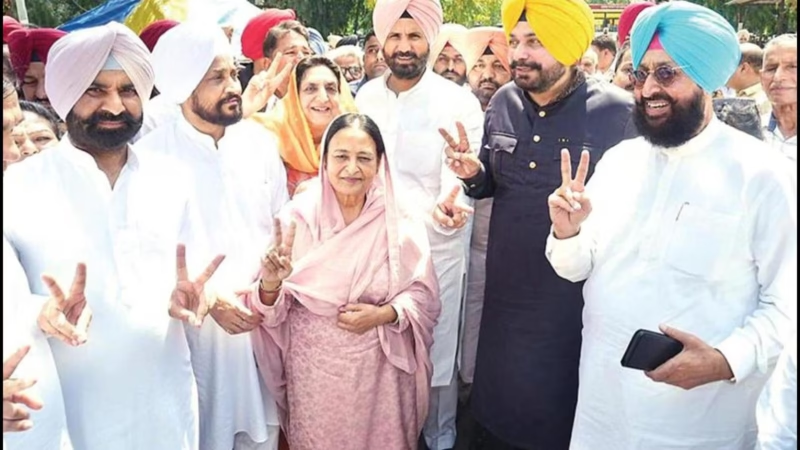 The Congress party in Punjab finds itself at a critical juncture as it grapples with persistent internal divisions that threaten to undermine its electoral prospects in the upcoming 2027 assembly elections. The party’s chronic factionalism, which has plagued it for years, continues to manifest in various forms despite repeated warnings from leadership and organizational restructuring attempts.
The Congress party in Punjab finds itself at a critical juncture as it grapples with persistent internal divisions that threaten to undermine its electoral prospects in the upcoming 2027 assembly elections. The party’s chronic factionalism, which has plagued it for years, continues to manifest in various forms despite repeated warnings from leadership and organizational restructuring attempts.
The severity of the internal discord becomes evident when examining recent party interactions, where grassroots workers have openly questioned senior leaders about party splits during campaign events. This public display of internal strife reflects deeper organizational issues that have persisted through multiple leadership changes. Punjab Congress chief Amrinder Singh Raja Warring has repeatedly warned party leaders against breaking discipline and indulging in factionalism to gain higher positions, indicating that the problem remains far from resolved.
The electoral consequences of these internal battles have been devastating for the party. Warring himself has reminded party workers of the catastrophic impact of infighting, pointing out how the party’s strength plummeted from 58 seats in 2017 to just 18 seats in the 2022 assembly elections. This dramatic decline serves as a stark reminder of how internal divisions can completely derail a party’s electoral fortunes, transforming it from a dominant force to a marginal player in state politics.
The historical context of these divisions reveals a pattern of leadership conflicts that have consistently undermined party unity. During Captain Amarinder Singh’s tenure as chief minister, his conflicts with the faction headed by Navjot Singh Sidhu created significant organizational turmoil. Amarinder Singh faced criticism for being inaccessible to Congress MLAs, while factional loyalties often took precedence over party interests, creating multiple power centers that weakened the organization’s overall effectiveness.
Currently, the Congress party faces the formidable challenge of competing against the Aam Aadmi Party, which holds a commanding position with 92 out of 117 seats in the Punjab Legislative Assembly. With Bhagwant Mann as the incumbent Chief Minister, AAP has established itself as the dominant political force in the state. The next Punjab legislative assembly election, expected to be held in February 2027, will test whether Congress can overcome its internal divisions to mount a credible challenge against this well-entrenched incumbent.
The impact of continued groupism on Congress’s 2027 electoral prospects appears overwhelmingly negative. Internal conflicts inevitably lead to the wastage of precious resources and energy that should be directed toward fighting the real political opposition. When a party is divided into competing factions, it creates confusion among voters who struggle to understand the party’s direction and leadership structure. This confusion extends to candidate selection processes, where factional loyalties often override merit-based considerations, leading to suboptimal ticket distribution that fails to field the strongest possible candidates.
Furthermore, divided leadership structures make it extremely difficult to present a unified campaign message to voters. When different factions within the same party are promoting conflicting narratives or priorities, it becomes nearly impossible to build a coherent electoral strategy. Warring has referenced similar poll debacles in states like Haryana and Maharashtra, attributing these electoral failures to factionalism within Congress units, demonstrating that this is not merely a Punjab-specific problem but a nationwide challenge affecting the party’s electoral performance across multiple states.
The path forward for Congress requires decisive action on multiple fronts. The party must resolve its leadership disputes with finality, rather than allowing them to fester and resurface repeatedly. Instead of expending energy on internal battles, Congress needs to focus on building anti-incumbency sentiment against the AAP government and presenting itself as a credible alternative. This requires the party to present a unified face to voters, something that has been notably absent in recent years.
The harsh reality of electoral politics is that divided parties rarely achieve victory, especially when competing against relatively united incumbent parties like AAP in Punjab. Historical evidence consistently shows that internal divisions are among the most effective ways for political parties to self-destruct electorally. Unless Punjab Congress can fundamentally overcome its chronic factionalism and present a united front, it risks not only losing the 2027 elections but potentially cementing its status as a marginal player in Punjab politics.
The upcoming 2027 assembly elections represent both a challenge and an opportunity for Punjab Congress. If the party continues on its current trajectory of internal divisions and factional warfare, it will likely remain relegated to the sidelines while AAP consolidates its dominance further. However, if Congress can learn from its past electoral failures and successfully unite its various factions behind a common agenda and leadership, it may yet have a chance to regain relevance in Punjab’s political landscape. The choice ultimately rests with the party leadership and cadre – they can either continue down the path of self-destructive factionalism or unite to provide effective opposition to the ruling party.